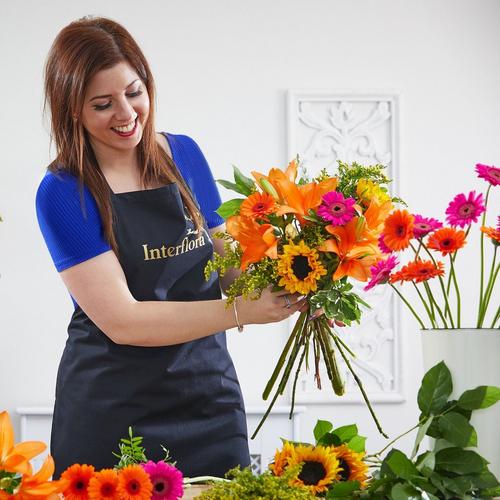The Ultimate Guide to Statice
Also known as sea lavender and marsh rosemary, statice is a flowering plant that spans around 120 different species. They feature tightly packed flowers in a range of hues from pinks and violets through to deep purple and some that are white or yellow.
Statice are popular with gardeners as the leafy calyx that surrounds the flowers is also pretty and lasts far longer than any flower.
Statice meaning and symbolism
The longevity of statice flowers may be responsible for the fact that they have long been associated with memory and remembrance. At the peak of the Victorian fascination with floral communication, a gift of statice flowers was a way of showing someone that you were calling memories of them to mind.
In some cultures, statice are associated with success and often included in arrangements gifted to those that are sitting exams, interviewing for new jobs, or planning any other big life change. The flowers are thought to convey a message of positivity and optimism towards the recipient.
- Different colours of statice flowers can have different meanings:
- Blue – as a colour that represents loyalty and inspiration, blue statice are a good choice for close friends and relatives who offer enduring support.
- Pink – always familiar as the colour of romance, pink statice are often included in engagement and wedding decorations, but they’re also a great addition to a bouquet for a dear friend.
- Purple – often considered the colour of extravagance, purple statice work well in striking arrangements aimed at giving the recipient a real treat.
- Red – this can mean love and passion and can be included in wedding flowers and Valentine’s bouquets.
- White – as an enduring symbol of purity and innocence, white statice flowers can be a lovely gift for a treasured friend.
- Yellow – yellow statice represent joy and happiness, so they’re often given to celebrate new babies, new jobs, and any time a little positive energy is welcome.
Statice facts
- Statice dry very well and are often used in dried arrangements where their lasting colour have earned them the name ‘the everlasting flower’. As such, statice can also be used as a symbol of sympathy and given as a sign of lasting memories and affection.
- Although commonly known as sea lavender, statice flowers aren’t related to lavender but are often found near the sea as they thrives in salty soil and can grow in coastal locations that are too harsh for most other plants.
- Statice is a plant of the genus Limonium, a Latin term for wild flowers that was coined by Pliny the Elder, who himself borrowed the term from the ancient Greek word for ‘meadow’.
- Statice are known for being ‘deer-resistant’ and are a popular choice with gardeners who need to adapt their planting to suit the local wildlife.
- Statice grow well with companion plants such as hydrangea, artemisia, and upright sedum.
- Statice plants can be evergreen or deciduous perennials and they are almost completely pest- and disease-resistant.
- Statice flowers attract pollinators such as bees and butterflies.
Types of statice
The limonium genus includes more than a hundred different types of statice, including varieties that grow in almost every part of the world. As well as making a beautiful addition to any flower arrangement, they have also been prized as a culinary and medicinal ingredient.
Purple statice
Blue statice
White statice
Yellow statice
When to plant statice
Statice seeds can be planted in the winter and started indoors several weeks before the weather turns and the last frost comes, so long as they have some natural light. They can also be planted straight into beds as long as the temperatures aren’t too low.
It’s important to ensure you keep your statice from getting too wet around their roots as that can cause crown rot, grey mould, or mould. Gardeners planting in humid conditions will need to be aware that the plants need room to allow air to circulate among them.
Watering early in the morning allows the moisture to dry out during the day, and if there are any dead or diseased portions of the plant, they can be removed easily.
How to care for Statice
Sowing and Germination
For indoor sowing, plant statice seeds in seed trays with potting soil, cover them with peat or vermiculite, and keep them watered regularly.
Temperatures
After germination, store the trays in a cold greenhouse, shed, or basement with natural light until temperatures are above 12 degrees Celsius before planting statice outside.
Planting
Choose a sunny spot with sandy soil for outdoor planting, water every other day until established, and provide regular fertilization for long-term blooms from summer to late autumn.
Aftercare
Once mature, statice plants are drought-tolerant and need watering only once or twice a week, thriving in sunny locations for optimal bloom development.
When do statice bloom?


Creating a statice bouquet





%20(1).jpg?$poi-square$&fmt=auto&qlt=default&fmt.jp2.qlt=60&bg=rgb%28254%2C+204%2C+167%29&w=960&aspect=16%3A9)

